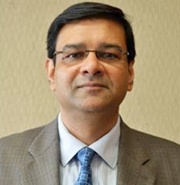MPC cuts RBI policy rate by 25 bps to 6.25%
04 Oct 2016
A meeting of the newly-constituted Monetary Policy Committee (MPC) today has decided to reduce the Reserve Bank of India's (RBI) policy repo rate under the liquidity adjustment facility (LAF) by 25 basis points to 6.25 per cent from the existing 6.50 per cent with immediate effect, the RBI stated in a release.
 The latest reduction brings the repo rate to its lowest since November 2010, after the start of monetary policy easing that began in January 2015.
The latest reduction brings the repo rate to its lowest since November 2010, after the start of monetary policy easing that began in January 2015.
The MPC, headed by RBI governor Urjit Patel, said the decision has been taken on the basis of an assessment of the current and evolving macroeconomic situation. The RBI said all six members voted in favour of the rate cut.
Consequently, the reverse repo rate under the LAF stands adjusted to 5.75 per cent, and the marginal standing facility (MSF) rate and the Bank Rate to 6.75 per cent, RBI stated in monetary policy release.
''The decision of the MPC is consistent with an accommodative stance of monetary policy in consonance with the objective of achieving consumer price index (CPI) inflation at 5 per cent by Q4 of 2016-17 and the medium-term target of 4 per cent within a band of +/- 2 per cent, while supporting growth,'' RBI stated in its release.
MPC's decision to cut interest rates comes despite a still firm consumer price inflation in August when headline inflation stood at 5.05 per cent, unchanged from the previous month although lower compared to the previous year's level of 6.07 per cent
Fuel inflation has moderated steadily through the year so far. Inflation excluding food and fuel (including petrol and diesel embedded in transportation) has been sticky around 5 per cent, mainly in respect to education, medical and personal care services.
Households reacted to the recent hardening of food inflation adaptively and raised their inflation expectations in the September 2016 round of the Reserve Bank's inflation expectations survey of households.
Input costs in the manufacturing sector, including staff costs, have firmed up slightly as evident in various surveys, but the presence of considerable slack has restrained their transmission into corporate pricing power.
MPC noted that liquidity conditions have remained comfortable in Q3, with the Reserve Bank absorbing liquidity on a net basis through variable rate reverse repo auctions of varying tenors.
Liquidity was injected through open market purchases of Rs20,000 crore in line with the system's requirements. As a result, the weighted average call money rate (WACR) remained tightly aligned with the policy repo rate and, in fact, traded with a soft bias. Interest rates on commercial paper (CPs) and certificates of deposit (CD) also eased.
In the external sector, India's merchandise exports contracted in the first two months of Q2. Subdued domestic demand was, however, reflected in a faster contraction in imports.
Also, the still soft crude prices pared off a fifth of the oil import bill and gold import volume slumped to a fifth of its volume a year ago. Consequently, the merchandise trade deficit narrowed by $10 billion in April-August on a year-on-year basis.
These developments are likely to have contained the current account deficit in Q2 at its level in Q1, although the decline in remittances and the flattening of software earnings warrants monitoring, MPC noted.
While the pace of foreign direct investment slowed compared to a year ago, portfolio flows were stronger after the Brexit vote, galvanised by a search for returns in an expanding universe of negative yields. The level of foreign exchange reserves rose to $372 billion by 30 September 2016 – an all-time high.
According to the MPC, the March-June quarter economic expansion slowed to 7.1 per cent from 7.9 per cent in the previous quarter, though that still places India among the world's fastest-growing economies.
Also, manufacturing growth declined in September on weakening demand.
While the MPC has been given a mandate of "maintaining price stability," it must do so "while keeping in mind the objective of growth," according to the amended RBI Act.






























